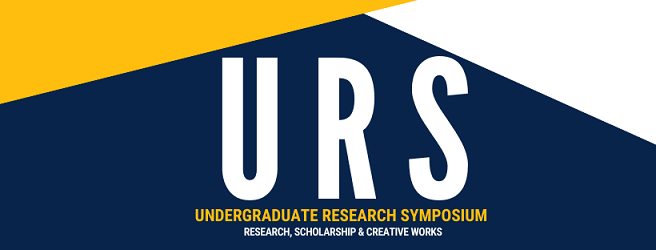Faculty Sponsor
Robert Paul
Final Abstract for URS Program
Background: Perinatally acquired HIV (PHIV) remains a major global health challenge. Approximately 90% of the global population of PHIV reside in low- or middle-income countries (LMICs) where access to antiretroviral therapy (ART) remains incomplete, particularly for PHIV. With PHIV, the brain is exposed to the virus during critical periods of brain development without the immunological benefits from ART. Unlike adults with horizontally acquired HIV whose nadir CD4+ Tcell count is a strong correlate of cognitive difficulties that persist after sustained use of ART, cognitive symptoms among PHIV youth are independent of traditional HIV disease metrics. Prior studies indicate that PHIV youth who survive the early years of life with ART exhibit unique cognitiveimmune profiles when compared to adults with chronic HIV;1-3 however, evidence for markers of immune dysregulation (e.g., immune activation, inflammation) that correspond to cognitive symptoms among PHIV youth remains limited. Methods: The present study compared 105 youth with PHIV and 44 youth without PHIV residing in orphanages with very similar environmental conditions, allowing for further investigation into the unique cognitive-immune profiles expressed by PHIV youth (ages 8-18). Participants completed culturally applicable neurocognitive batteries and provided blood samples to assess HIV disease indices and immune markers of inflammation. All youth with PHIV were on stable ART and virally suppressed. We computed Pearson correlations among each raw test score and immune biomarkers, including CD14, CRP, Neopterin, TNF-α, IL-6, and CD163. Results: Youth with PHIV demonstrated statistically significant poorer cognitive function compared with youth without PHIV in all domains as well as higher levels of CD14 (p<.001), CD163 (p=.010), CRP (p<.001), and Neopterin (p=.017). Among youth with PHIV, inverse relationships were observed between CRP and Digit Span Backward (r=-.306, p<.01) and between CRP and Digit Symbol (r=-.252, p<.05). Positive correlations were observed between Timed Gait and CD14 (r=.305, p<.01) and between Timed Gait and Neopterin (r=.290, p<.05). Among youth without HIV, a single positive correlation was noted between Trails A and CD14 (r=.424, p<.01). Discussion: Consistent with our findings, previous studies note that peripheral markers of monocyte activation remain elevated despite viral suppression. However, one should be cautious to use individual peripheral biomarkers as proxies for cognition. Inflammation is a mechanism for cognitive impairment separate from HIV status, as youth with and without PHIV showed similar levels of cognitive impairment, likely due to their similar socio demographic backgrounds. Understanding the interactions and synergistic effects of peripheral markers of immune activation will be important in further efforts to characterize cognitive impairment in youth with PHIV, ultimately allowing for sooner diagnosis, more accurate prognosis, and effective, individualized treatment. References: Ananworanich J, Kerr SJ, Jaimulwong T, et al. Soluble CD163 and monocyte populations in response to antiretroviral therapy and in relationship with neuropsychological testing among HIVinfected children. Journal of virus eradication. 2015;1(3):196. Arpadi SM, Shiau S, De Gusmao EP, Violari A. Routine viral load monitoring in HIV-infected infants and children in low- and middle-income countries: challenges and opportunities. Journal of the International AIDS Society. 2017;20(S7):e25001. Hoare J, Myer L, Heany S, et al. Cognition, Structural Brain Changes, and Systemic Inflammation in Adolescents Living With HIV on Antiretroviral Therapy. J Acquir Immune Defic Syndr. 2020;84(1):114- 121. Kerr SJ, Puthanakit T, Malee KM, et al. Increased Risk of Executive Function and Emotional Behavioral Problems Among Virologically Well-Controlled Perinatally HIV-Infected Adolescents in Thailand and Cambodia. J Acquir Immune Defic Syndr. 2019;82(3):297-304. Linn K, Fay A, Meddles K, et al. HIV-Related Cognitive Impairment of Orphans in Myanmar with Vertically Transmitted HIV Taking Antiretroviral Therapy. Pediatr Neurol. 2015;53(6):485-490 e481. Malee KM, Smith RA, Mellins CA, Pediatric HIVACS. Brain and Cognitive Development Among U.S. Youth With Perinatally Acquired Human Immunodeficiency Virus Infection. J Pediatric Infect Dis Soc. 2016;5(suppl 1):S1-S5. Patel PB, Apornpong T, Puthanakit T, et al. Trajectory Analysis of Cognitive Outcomes in Children With Perinatal HIV. Pediatr Infect Dis J. 2019;38(10):1038-1044. Puthanakit T, Ananworanich J, Vonthanak S, et al. Cognitive function and neurodevelopmental outcomes in HIV-infected children older than 1 year of age randomized to early versus deferred antiretroviral therapy: the PREDICT neurodevelopmental study. The Pediatric infectious disease journal. 2013;32(5):501
Presentation Type
Visual Presentation
Document Type
Article
Included in
Immunology and Infectious Disease Commons, Microbiology Commons, Neuroscience and Neurobiology Commons, Psychology Commons

